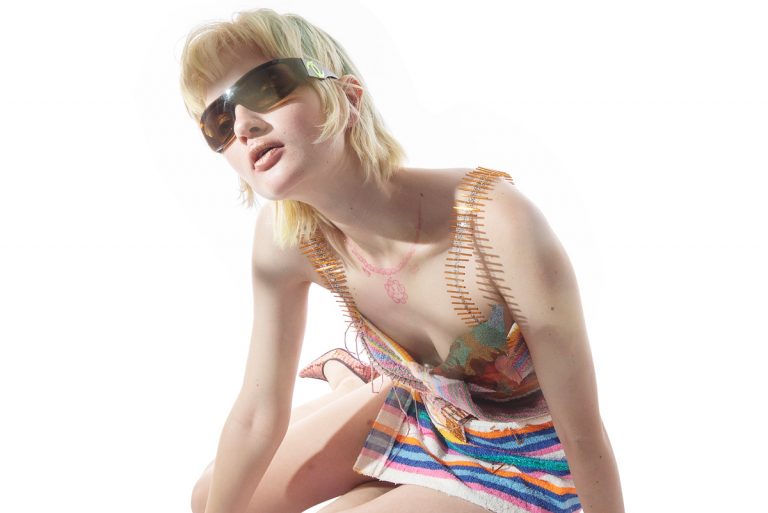Why is Y2k fashion still trending in 2021? It’s more complicated than you think
As late 90s babies are entering their 20s, early 2000s clothing has come back in a big way. “Y2k” was one of Pinterest’s most searched terms in 2020. This popularity was reflected on Depop, where top sellers such as Isabella Vrana have made impressive careers out of flipping deadstock apparel from bygone decades. This new millennium saturation on both social media streams and online marketplaces has led to and reinforced a resurgence of bedazzled, over-the-top styles within high-end and high-street fashion. But, is there a more entrenched meaning behind all these mini-pleated skirts and knee-high leather boots than simply gen Z nostalgia?
The cause behind never-ending fashion cycles is often boiled down to nostalgia, but no one usually takes this reasoning any further. Pan Lü—Urban Studies professor at the Harvard-Yenching Institute—notes that the Greek word literally “means a longing for a faraway home that no longer exists or has never existed.” This translates into a type of generational homesickness that crops up as various demographics enter new stages of life. Lü suggests that “nostalgia becomes a collective symptom beyond the individual level. It is […] a result of a new understanding of time and space.”
Beneath the low-rise dark-wash denim and mesh tops lays the urge to return to a simpler time and space. Not just to plushy, snack-punctuated youth, but one where the internet was an untraversed, private landscape, rather than a space where you have 24/7 access to a former president’s disturbing stream of consciousness in the palm of your hand.
This renaissance is deeply embedded within internet culture of the past and present. Claire Reidy—my 15-year-old sister—for instance, noted that in her age group “y2k style is much more common online than off.” She admits that because she “was so young when these clothes were originally trendy, I don’t get that same feeling that someone a little older may get” when engaging with the garments.
By dressing in the clothing of the early 2000s, the design of the early digital sphere has been resurrected. Its glitchy, clunky ease has become a symbol of a more straightforward, less polarised time. Many popular Instagram users edit their photos of Nicole Richie-inspired outfits to recreate images that seem like they were decorated with y2k ephemera rather than taken on a £900 smartphone. Forget rose-tinted glasses; gen Zers are looking at the world (or rather, their phone screens) through rimless Chanel ombré sunnies.
While the left hand jingles in a chunky charm bracelet, reaching for a pair of patchwork pants, the right hand is now retweeting AOC and flipping through reams of Instagram Stories all ardently supportive of their side. 20 years ago, that right hand would have been perfecting a Myspace playlist on the family’s computer, or quite possibly not on the web at all.
In Jia Tolentino’s essay titled The I in the Internet, the New Yorker writer states that “the everyday madness perpetuated by the internet is the madness of [its] architecture, which positions personal identity at the centre of the universe.” Through social media profiles, algorithmically targeted ads and cyber bubbles which catalyse and hyperextend our offline perspectives, the self has become the small prism through which we view the internet and, by extension, the world.
Some designers have chosen to co-opt this madness in updated reiterations of 2000s silhouettes and textures to remind consumers just how expansive the internet truly is. Caitlin Yates, for instance, has revamped the mesh, graphic-printed y2k top with pertinent social issues through her label C8Y8S. Low-fi, grainy footage taken from Google Earth satirically comments on our ever-vigilant technology, allowing buyers to wear images of truly candid moments.
In September 2020, Marc Jacobs’ Heaven launch also capitalised on the reemergence of y2k patterns and palettes. However, the clothing label amplified its adoption of the era by including ephemeral objects in its release. The collection showcased models standing with bored expressions in maximalist teenage bedrooms: baby tees and plaid pleats hovering ‘angstily’ above a 1999-edition DVD of Sofia Coppola’s The Virgin Suicides or a VHS tape of Aphex Twin’s cult-classic Windowlicker. This time capsule full of analogue gems, however, reveals the desire to return to our insular spaces full of personal interests that weren’t perpetually infiltrated and subtly manipulated by the blinking, opinionated outside world.
For decades, nostalgia has reemerged prominently in cyclical fashion trends as a source of comfort rooted in the rising generation’s youth as well as a way to separate oneself from the current zeitgeist. Why wear fast fashion apparel when one can buy unique, secondhand Cop Copine tops from Berlin on Depop? Why stream The Virgin Suicides on your laptop—which simultaneously is now your office, television set, shopping portal and social space—when you can watch it, uninterrupted, on DVD?
These physical reiterations prompt not only a replication of the material culture of one’s youth, but also its actions and routines. The popularity of these previously obsolete trends lies in its invitation to reenact these old, mundane rituals of rewinding a VHS tape or pulling the rhinestone zipper of a velour tracksuit top.
That being said, next time you reach for a bejewelled thong or add a fuzzy bucket hat to your online shopping cart, consider whether or not you could be grasping for this larger, earlier context of relative ease and uncomplicated internet interactions as well.





